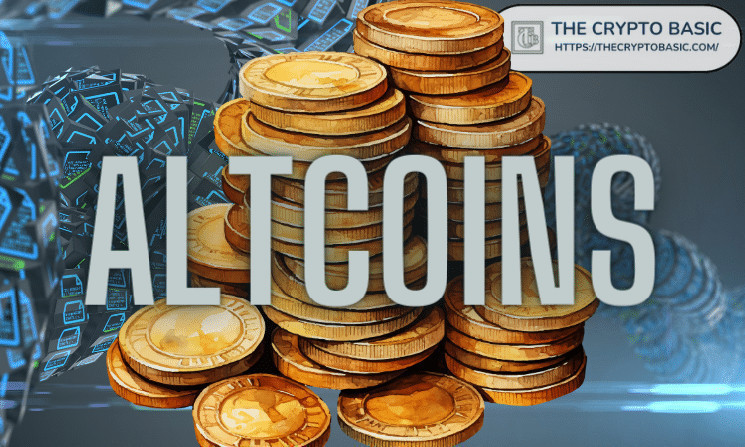Crypto analyst Atlas has pointed to ten altcoins that have been redundant and are expected to lag in the coming bull run.
During a bull cycle, literally every coin in the crypto market increases in price. Notably, cryptocurrencies grow in different proportions, with some outperforming others on the premise of trending narratives, adoption, and utility.
However, some crypto assets have been redundant, providing little or no profit for investors. Market speculator Atlas has listed ten coins that have underperformed recently and should be avoided during this bull cycle.
He divided these assets into three categories: those with outdated technologies, irrelevant narratives, and artificial tokens with controlled supply.
Atlas’ Top Five List of Tokens Doomed to Underperform
In a long X thread, the market speculator mentioned ten crypto assets he sees never providing substantial returns for investors, with some heavyweights in the mix.
If u invested $1k in $XRP in September 2018…
Today, 6 years later, it would still be worth $1k 😱
Some alts can do 100x in a week, but 99% of alts are destined to dump.
🧵: 10 coins doomed to never grow (which u’re probably holding) and how to identify them 👇 pic.twitter.com/exUwJTdV9E
— Atlas (@crptAtlas) September 26, 2024
Atlas’s list includes the seventh largest crypto asset by market cap, XRP. The analyst noted that if an investor bought the token with $1,000 in September 2018, he would still have the same amount six years later.
The XRPL native token has been relatively unrewarding for investors. Its years-long battle with the US Securities and Exchange Commission has stunted its growth, ensuring it almost missed the 2021 bull cycle. Although XRP has gained bullish sentiments following the victory over the US regulator, Atlas alleged it is doomed to remain redundant.
Furthermore, Atlas mentioned another crypto heavyweight, Cardano (ADA). Termed the “Ethereum Killer,” the Cardano network gained instant traction upon launch in 2017. Its founder, Charles Hoskinson, who co-founded Ethereum, aimed to build on Ethereum’s setbacks in scalability, efficiency, and interoperability.
However, its native token, ADA, has failed to impress recently despite occupying the tenth position in the market cap ranking. According to Atlas, the Cardano technology is outdated; hence, it is bound to remain stunted due to lowering attraction. The analyst stated this claim despite the recent Chang upgrade that introduced the Cardano network to a community-driven, fully decentralized government.
Third on Atlas’ list is Polkadot’s DOT. Considered one of the most decentralized blockchains in the sector, Polkadot gained substantial attraction and utility during the 2020-2021 bull cycle, pushing its price to an all-time high of $55.
However, DOT has gone southways since then, falling over 90% from its ATH to $4.89. Atlas noted that Polkadot’s problem is similar to Cardano’s, as its technology has lost bullish narratives.
Meanwhile, the analyst included Ethereum’s hardfork, Ethereum Classic (ETC), on the list. He noted that the project lacks prospects as it has failed to distinguish itself from Ethereum. He further cited an overreliance of ETC developers on the Ethereum network despite breaking away from it.
The analyst also mentioned the popular play-to-earn game Sandbox. SAND surged 14,000% after gaining traction in 2021 but has trended downwards since then. At the current market price, an investor who bought SAND in September 2021 will have a 52% portfolio loss.
The Other Five Tokens Doomed to Never Grow
Atlas mentioned the other five fairly popular altcoins doomed never to grow. The analyst mentioned Monero’s XMR, noting that its popularity, gained through its high standard of anonymity and privacy, has faded.
Starknet’s STRK also made the list. Atlas stated that the tokenomics of the Ethereum layer 2 network meant it was doomed to fail. He noted that STRK’s high, fully diluted valuation (FDV) and low market value meant the asset would always struggle due to token unlocks.
Atlas also mentioned Litecoin (LTC), EOS Network (EOS), and GMT. He noted that these tokens’ technologies and market advantages during their debut have lost traction and are now almost irrelevant.
 thecryptobasic.com
thecryptobasic.com
